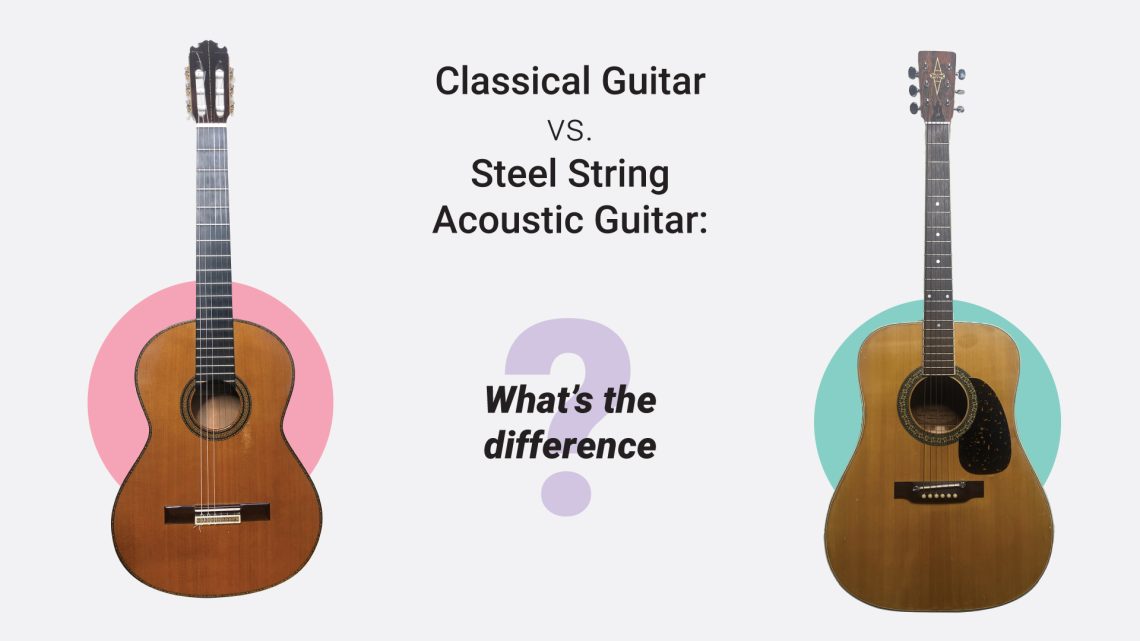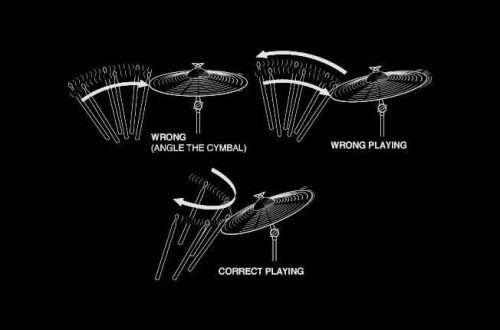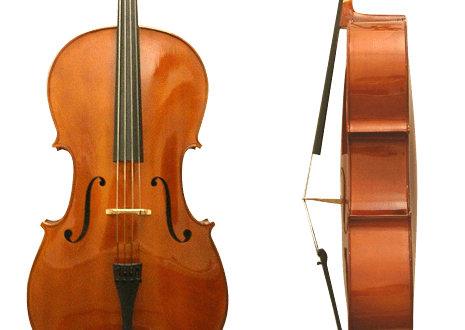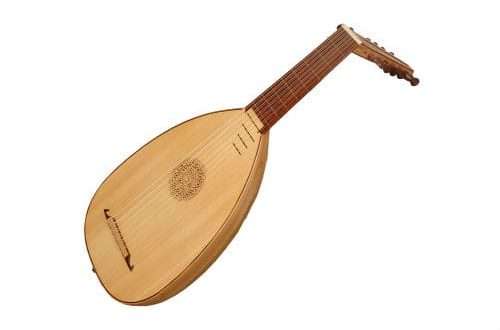
Acoustic guitar: description, composition, difference from classical
Contents
It’s safe to say that the guitar is the most popular family of musical instruments. The instrument is used in all genres of popular music: pop, rock, blues, jazz, folk and others. One of the varieties of guitars is called acoustic.
What is an acoustic guitar
Acoustic guitar is a stringed musical instrument. Belongs to the group of plucked instruments. Sound is produced by plucking or striking the strings with fingers.
The first prototypes of the instrument appeared as early as the XNUMXnd millennium BC, as evidenced by the found images of the Sumerian-Babylonian civilization.
In the III-IV centuries, the zhuan appeared in China – an instrument similar to a guitar. The Europeans modified the design and introduced the first acoustics in the XNUMXth century.
The instrument acquired modern types by the end of the XNUMXth century after a series of experiments. Over the course of history, the shape of acoustic guitars has changed, as well as their size and workmanship.
How is it different from classic
The classical guitar belongs to acoustic musical instruments, but it is customary to separate it from the more popular variety acoustics. The difference between an acoustic guitar and a classical guitar is significant.
Nylon strings are installed on the classics, steel strings on the acoustics. String materials determine the sound. The sound of nylon is soft and quiet, steel is loud and rich. It is impossible to say which option is better – both are used in different styles of music and to create the right mood.
The width of the neck of the classics is from 50 mm. Neck acoustics – 43-44 mm. For individual models, the width may differ from the generally accepted. The wider the neck, the greater the gap between the strings.
To control the deflection of the neck in acoustics, an anchor is used. Classic has an open mechanism of tuning pegs.
Acoustic guitar device
The arrangement of the main parts of acoustics is the same in all models. The main elements are the body, head and neck. The hull structure consists of two decks and a shell. Strings are attached to the top deck, and the bottom deck is on the back. The shell acts as a constituent connector for the deck.
In the center of the body is a hole called the “socket”. Case types are different, differing in size and cutout pattern.
From the body stretches a long neck with installed frets. The number of frets is 19-24. Above the neck is the “head”. On the head is a peg mechanism that holds and changes the tension of the strings.
What does an acoustic guitar sound like?
The sound of an acoustic guitar depends on the number of frets, strings, and tuning. The traditional guitar sounds in four octaves. The distance between two frets on the same string is one semitone.
By changing the tension of the strings, the musician can change the tone of the instrument. One of the most popular and simple tunings is to lower the 6th string one tone lower. Instead of the E note, the string is tuned to D, which significantly affects the overall sound.
Types of Acoustic Guitars
There are the following types of acoustic guitars:
- Dreadnought. The most popular type, when talking about acoustics, they usually mean it. The main feature is a massive body and loud sound with expressive bass. Alternative name – western and pop guitar. Used as an accompaniment for a vocalist and along with other instruments.
- 12-string. Appearance and structure are similar to Western. The main difference is in the number of strings – 12 instead of 6. The strings are arranged in pairs: the first 2 pairs sound the same, the remaining 4 – with an octave difference. This results in a rich and rich sound. Due to the increased number of strings, more effort is required from the player when playing chords, this type is not recommended for beginners.
- With cutout. The main part of the design resembles a dreadnought, but with a cutout in the lower part of the hull. The notch is designed to make it easier to play the high frets. Some musicians have criticized a cutaway instrument: the reduced body affects the quality and volume of the sound produced.
- Parlor. A guitar with a reduced body and wide neck. Usually this is played in small rooms. The small size provides a balanced sound. Treble, mids and bass sound at the same volume level. The wide neck is designed for fingertip comfort by increasing the distance between the strings.
- 7-string. Another name is Russian guitar. It differs from standard acoustics by the presence of an additional string and a special tuning – terts-quarte. In the XXI century, enjoys little popularity.
- Jumbo. They have a very massive body. Bass sounds loud, sometimes suppressing the mids.
- Electroacoustic. Acoustics with a mounted pickup is called electroacoustic. The main feature is the ability to connect the instrument to speakers, an amplifier, a computer. Used at professional concerts and when recording songs in a recording studio.
- Semi-acoustic. It looks like an electric guitar, but with a large soundboard and a cavity in the body. The difference from a conventional electric guitar is the ability to play without connecting to an amplifier.
How to choose an acoustic guitar
To choose the right guitar for a beginner, a guitar master, usually present in music stores, will help. However, first it is recommended to determine the type of guitar you need and understand what kind of music you want to play, read about the differences and classification of guitars. The shapes of acoustic guitars also play an important role. Classical music is needed for academic music, dreadnought acoustics are recommended for popular music.
Dreadnoughts are made from different types of wood. Relatively cheap options are made from spruce, while Brazilian rosewood can be used in expensive ones. The material of a western guitar depends not only on the price, but also on the sound. Wood affects the quality and tone of the sound.
The tool should be tested while sitting. A regular type of acoustic guitar should be held correctly with the body resting on the right foot.
No need to save when buying the first tool and pick it up in a hurry. Budget acoustics may not be a good choice – low-quality sound and problems with the fretboard can discourage the desire to learn how to play the instrument.
It is also not worth taking too expensive a tool. You need to look for the golden mean and make the right choice. Meanwhile, the most expensive acoustics in the world is CF Martin. Made in 1939. Used by guitarist Eric Clapton. Estimated at $959.
Tool Care
The main thing when caring for an acoustic guitar is to monitor the temperature and humidity of the room. The instrument must not be subjected to sudden changes in temperature.
The ideal temperature for storing acoustics is 20 degrees. For carrying in cold weather, you need to use a guitar case. Bringing the instrument from a cold street into a warm room, you can not immediately start playing. At best, the system will go astray, at worst, the strings will break and the pegs will be damaged.
The humidity of the room in which the instrument is stored should not be less than 40%. Insufficient moisture leads to drying out of the structure. The solution is to store it in a case, away from the battery.
It is recommended to wipe the body with a cloth to remove grease stains. If the instrument is not new, then with the help of a polish, the shine of the case returns.
Neck care – wiping from dust and grease. Lemon oil is effectively used to eliminate traces of fat.
Failure to follow the recommendations for the care of the instrument leads to a deterioration in the appearance and musical qualities of the instrument.
Acoustic strings need to be cared for to prolong their lifespan. The strings should be cleaned regularly with a dry cloth. There are special cleaners that effectively remove dirt from the strings.
In conclusion, we can note the colossal influence of the acoustic guitar on music and popular culture. The instrument is used in all popular genres of music. With the help of acoustics, many popular hits were recorded. The relevance of acoustics is still at a high level.





